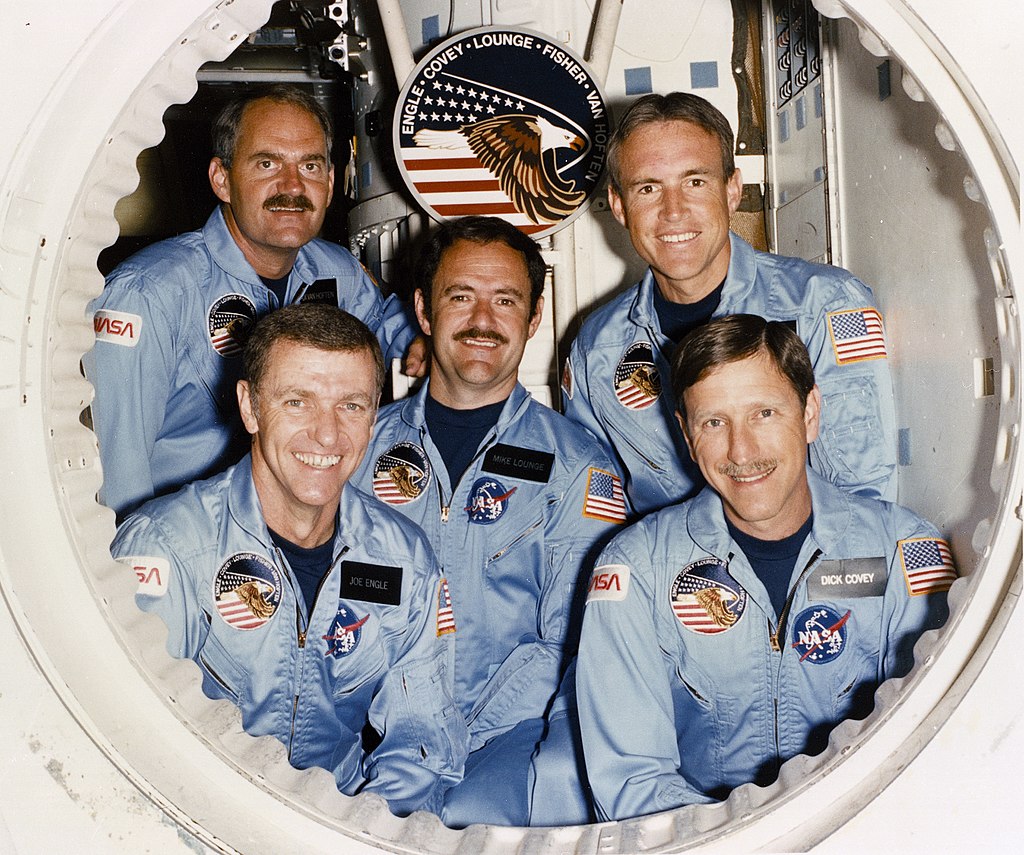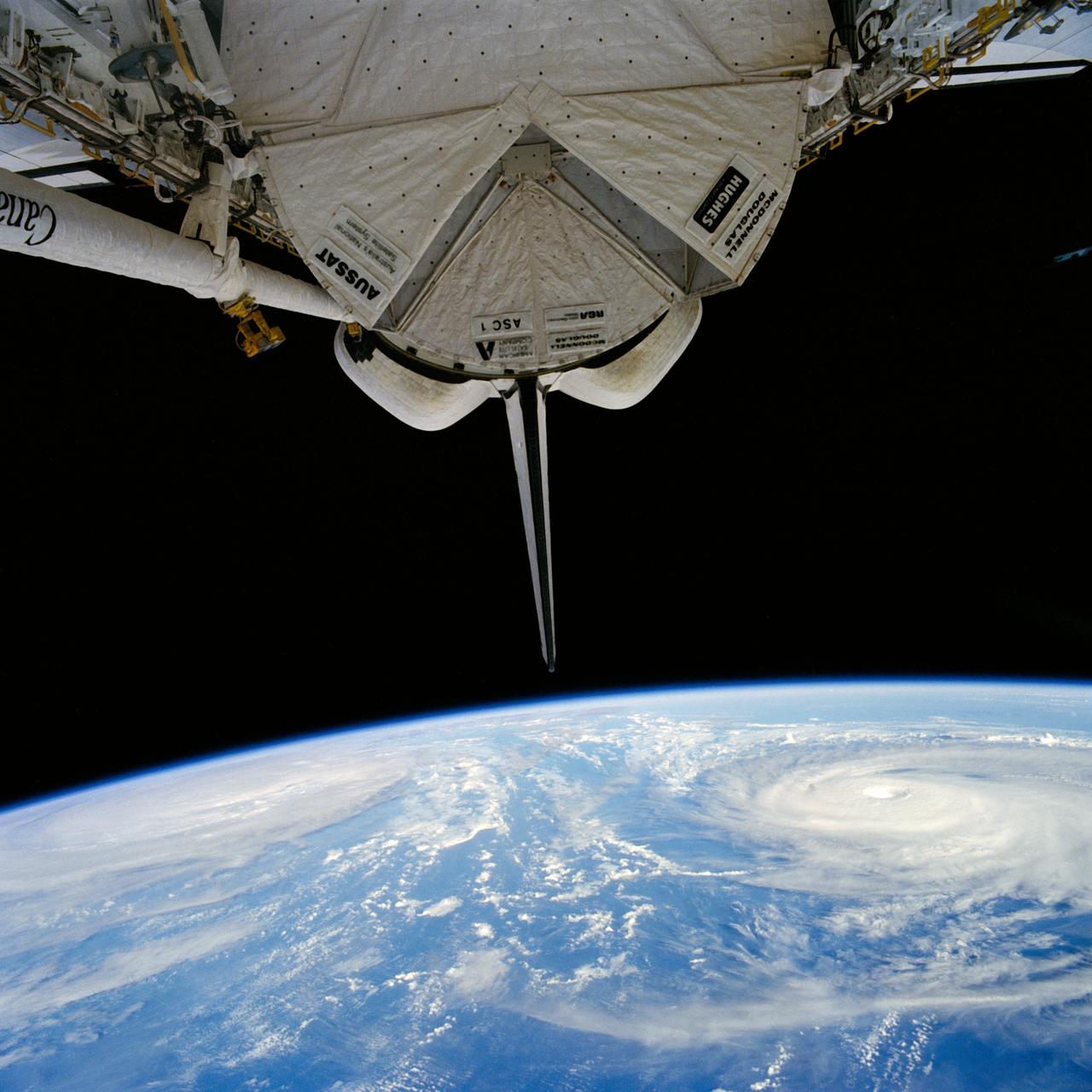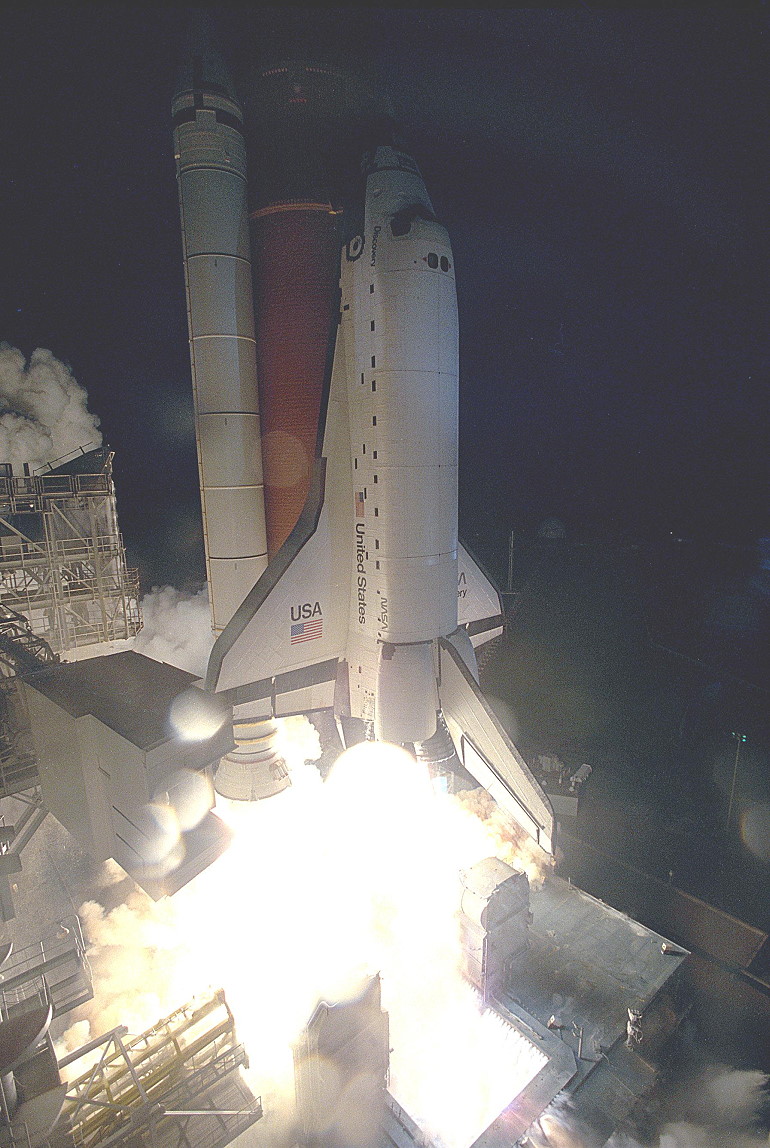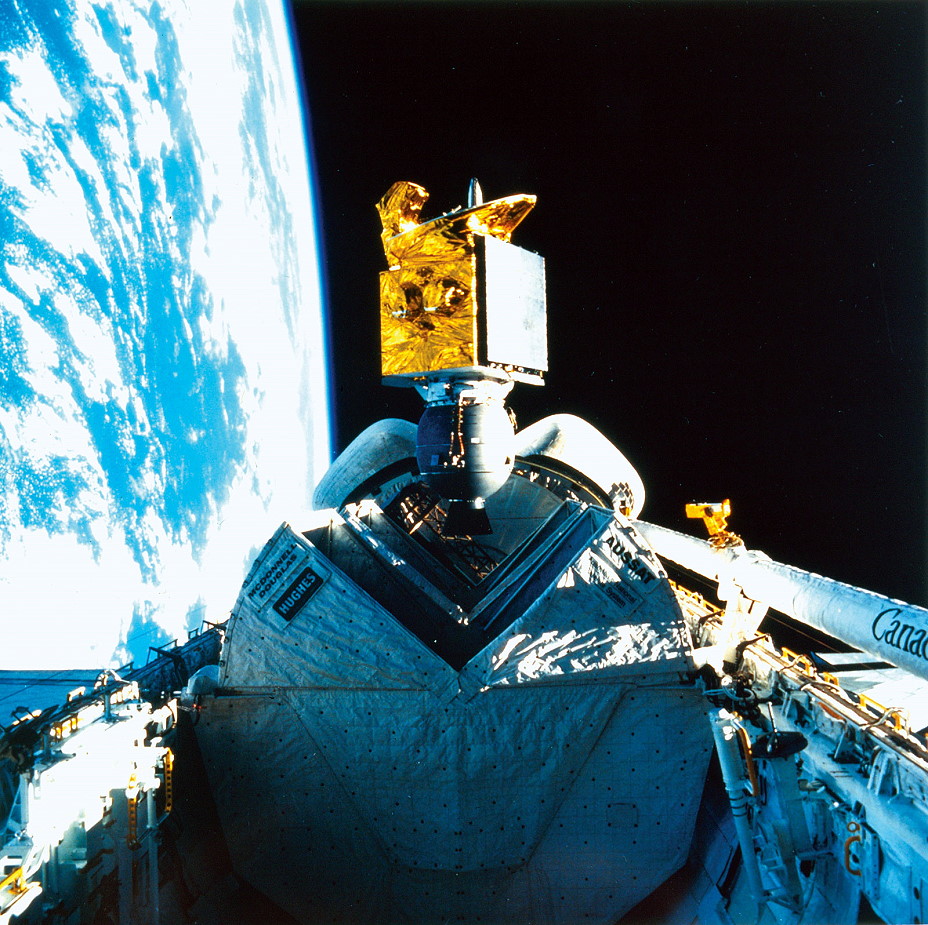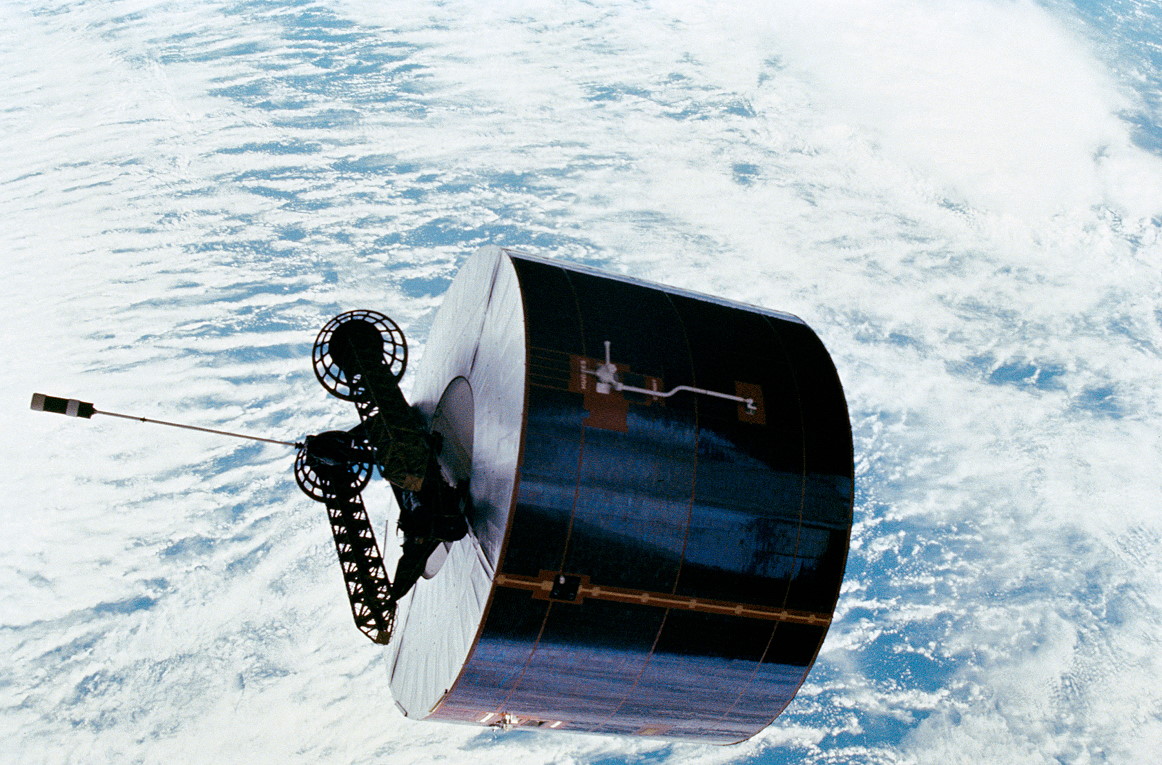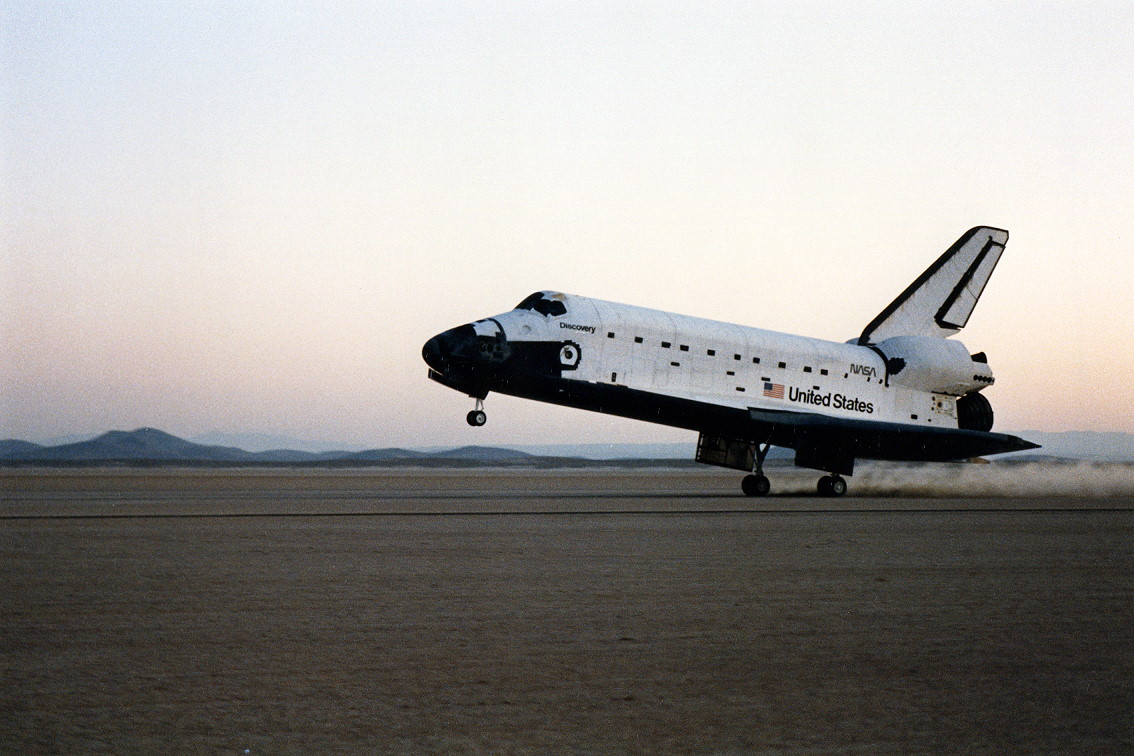STS-51I Fact Sheet
By Cliff Lethbridge

STS-51I – Discovery
20th Space Shuttle Mission
6th Flight of Discovery
Crew:
Joe H. Engle, Commander
Richard O. Covey, Pilot
James D.A. van Hoften, Mission Specialist
John M. Lounge, Mission Specialist
William F. Fisher, Mission Specialist
Orbiter Preparations:
Tow to Orbiter Processing Facility – June 29, 1985
Rollover to Vehicle Assembly Building – July 30, 1985
Rollout to Launch Pad 39A – August 6, 1985
Launch:
August 27, 1985 – 6:58:01 a.m. EDT. August 24, 1985 launch attempt was scrubbed at T-5 minutes due to thunderstorms in the launch pad vicinity. August 25, 1985 launch was postponed when Discovery’s Number Five On-Board General Purpose Computer failed. August 27 launch was delayed 3 minutes, 1 second due to a combination of weather and an unauthorized ship entering the solid rocket booster retrieval area.
Landing:
September 3, 1985 – 6:15:43 a.m. PDT at Runway 23, Edwards Air Force Base, California. Rollout distance was 6,100 feet. Rollout time was 47 seconds. Mission duration was 7 days, 2 hours, 17 minutes, 42 seconds. Landing occurred during the 112th orbit. The flight was shortened one day when the AUSSAT-1 sunshield hung up on the Shuttle’s remote manipulator system camera and AUSSAT-1 had to be deployed before originally planned.
Mission Summary:
Three communications satellites were deployed during the mission. These included ASC-1 for American Satellite Company, AUSSAT-1 for Australia, both of which employed PAM-D solid rocket motors. SYNCOM-IV-4 (also called LEASAT-4) reached geosynchronous orbit but failed to operate.
Two spacewalks were performed by astronauts Fisher and van Hoften, although only one spacewalk had been planned. The first spacewalk was conducted on August 31, 1985 and lasted 7 hours, 20 minutes. During this spacewalk, the astronauts began repairing the SYNCOM-IV/LEASAT 3 satellite which was unsuccessfully deployed during STS-51D.
Since the work was not completed during the first spacewalk, a second was performed on September 1, 1985. The second spacewalk lasted 4 hours, 26 minutes. Although the astronauts experienced some difficulty handling the satellite, it was successfully repaired and re-deployed.
An experiment called the Physical Vapor Transport Organic Solid Experiment (PVTOS) was carried in the Shuttle’s middeck.
SELECTED NASA PHOTOS FROM STS-51I
